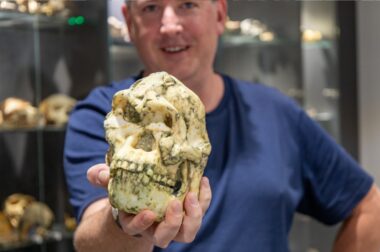A new conservation charity is empowering sailors to deepen our understanding of biodiversity in the Pacific Ocean using cutting-edge technology.
The project will use DNA sequencing technology to identify thousands of species from a cup of water, with sailors collecting data to create 3D models of coral reefs and helping build a dataset of environmental variables using information on their instruments.
Citizens of the Sea, a charity recently co-founded by Cawthron Institute (NZ) and New Zealand Geographic, has recruited sailors in the 2024 Pacific Rally to help understand the health and function of the world’s biggest ocean.
Through a partnership with global genomics leader Illumina, samples collected by the sailors will be analysed to provide an unprecedented amount of data about biodiversity in the Pacific, and the impact of climate change.
Erin Bomati, Field Operations Lead for Citizens of the Sea, said that over the next fortnight, 25 boats would depart Opua in the Bay of Islands, New Zealand, to take part in the Island Cruising Association’s Pacific Rally, an annual, four- to six-month sailing passage through the Pacific Islands.
“We’re empowering Pacific Rally sailors to become citizen scientists by equipping them with digital tools and state-of-the-art devices that enable them to collect environmental DNA (eDNA) data during their voyages,” Bomati said.
“The boats taking part in the Rally will tow Cawthron’s cutting edge ‘TorpeDNA’ sampling devices on offshore passages, collecting eDNA samples at up to 12 knots (22 kilometres per hour).
“We’re running this project in close partnership with leading local scientists and conservation groups in each island.”
The samples will later be analysed using the latest genomic sequencing technology from Illumina. This is a more comprehensive and considerably faster way of assessing biodiversity in marine environments than the physical surveys traditionally used to map and sample species.
CoTS co-founder and publisher of New Zealand Geographic, James Frankham, said collecting physical samples at ocean scale had long been an impossible endeavour for science.
“But understanding this massive ecosystem and the effect it has on our climate and maritime economies is a more urgent priority than ever,” Frankham said.
“To help, the team made sophisticated tools that were easy for sailors to deploy, and separate the tasks of data acquisition and data analysis.”
Cawthron Institute’s Dr Xavier Pochon, Citizens of the Sea’s Founding Scientist, said one of the best ways to survey the world’s oceans at scale is to collect and analyse eDNA data – the traces of biological material that all species leave behind in the environment.
“If we continually collect hundreds of water samples across large geographic scales, we can quickly isolate this eDNA in the laboratory, analyse it, and identify which species are present and how that distribution shifts in space and time due to climate change.
“With over 10,000 boats traversing our oceans at any given time, sailors on board cruisers, racers and commercial vessels represent an enormous untapped resource to help map ocean health.
“The Pacific Rally is the starting point for Citizens of the Sea’s vision, but with the support of new partners and funders, we’d like to take this initiative global so that we can provide a new level of data for scientists, conservationists and decision-makers worldwide.”
Evgeny Glazov, Regional Manager at Illumina said as leaders in the development of next-generation sequencing technology, samples can now be analysed very quickly.
“Before the arrival of eDNA and metabarcoding methods, obtaining the same information would have been very laborious and cost-prohibitive,” Glazov said.
“We’re proud to be partnering with Citizens of the Sea, which will help to provide humanity with data to inform decision making about how we protect and manage our precious oceans in the face of a changing climate.
“Water covers 71% of Earth’s surface, yet we hold relatively little data about the biodiversity and health of ocean ecosystems or the impact of climate change.”
The Pacific Rally will commence during the first clear weather window after May 6, with many vessels returning to New Zealand from October 2024.
The data they collect will be publicly accessible via www.citizensofthesea.org in late 2024.
ENDS
Images to accompany this media release can be found here (more to come this morning).
About us:
About Cawthron Institute:
Cawthron Institute is Aotearoa New Zealand’s largest independent science institute with expertise in ocean and freshwater science that supports healthy ecosystems, a prosperous blue economy and thriving people and communities.
About Illumina:
Illumina is a global leader in DNA sequencing and genetic testing technologies, dedicated to making tangible contributions to our world through the development of affordable and accessible sequencing technology.
About New Zealand Geographic:
New Zealand Geographic is a founding member of Citizens of the Sea, having trialled the torpedo collection device over three months in the South Pacific and developed the photogrammetric reef modelling technology.
About Next Generation Sequencing:
The Human Genome Project took more than a decade and billions of dollars to complete. Now, it takes a matter of days and less than $200 to sequence a genome. The Next Generation Sequencing used today allows researchers to sequence multiple samples simultaneously. This has opened genomics to uses in various fields outside of human health, where it originated.
Contact details:
Peter Somerville, Currie Communications, +61 403 868 984, [email protected].


